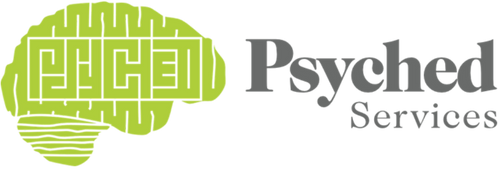In Search of a Strength-Based Approach to Special Education

Outdated and Stigmatizing Systems
Here is the final report. It’s weakness-based. Let’s talk at length about what this child can’t do.
It sounds ludicrous, doesn’t it? Except it’s the message we often send in education. Parents, please know that this is not the way we feel about your children. This is not the path we wanted to be on, but it is the path that has arguably been set out for us in special education. To be fair, special education is not the worst offender, but like other systems, it has clung to outdated practices that are unsupported by research. Here are some ways current processes fall short:
-
Referrals are deficit driven: Reality aside, educators and parents often believe that special education is the best way to help students in need. Special education, on the other hand, is not designed to help every student in need – It is designed to help students in need … because of a disability … that interferes with learning. All too often, the resulting systems mean that educators focus on student weaknesses, instead of strengths, in order to justify a referral.
-
Assessment is label driven: At the heart of every special education evaluation is the over-arching question: Does a child meet the legal criteria to receive services? Annoyingly, the legal criteria is riddled with outdated and stigmatizing language, which puts evaluators in the position of justifying phrases like, inability to learn … inappropriate behavior or feelings … significantly subaverage general intellectual functioning … limited strength and vitality … imperfect ability … severe educational needs … abnormal voice … defective pitch … you get the picture.
-
Labels shape expectations: Research tells us that people associate any disability with weakness, and children with disabilities know it. On top of that, people falsely believe that mental health concerns cause violence. In special education, such concerns fall under the category of an emotional disturbance (ED), which may make matters worse. In one study, teachers showed a strong preference for the label “learning disability” over that of “emotional disturbance,” suggesting both implicit and explicit bias. Because of this, evaluators and parents have been reluctant to qualify children under the category of ED, even when it applies.
-
Expectations shape behavior: Call it negativity bias, or linguistic relativity, or a self-fulfilling prophecy. Whatever you call it, the fact is that expectations matter. In the case of school expectations, teachers ask fewer questions, offer less constructive feedback, fail to correct mistakes, and allow shorter response times when they expect students to struggle. In turn, students progress more slowly and make fewer gains when teacher expectations are low (and vice versa when expectations are high). The same goes for student beliefs about themselves, with students performing better when told a test will be easy than when told it will be hard. Sadly, research supports that labels matter and educators are more likely to view student behavior as negative when told a student is in special education.
Reframing the Conversation
Now for the good news! Systems may be hard to change, but words aren’t, and words matter. Words shape the way people think. They shape expectations. They reframe the conversation. Here are some ways words can be used to help children:
-
Shift the focus of assessment: Yes, the primary purpose of assessment is to recommend eligibility, but equally important is to help committees establish a plan. More than labels, committees need to know what a child is ready to learn and how they can best learn it. If we focus on getting that information, committees will have what they need to make decisions about eligibility. It’s easy to get hung up on labels, but ultimately, parents, educators, and lawyers want to do what works and is best for kids. Focus on that goal first and you’ll be on solid footing.
-
Use assessment to empower others: There is emerging research to support the concept of assessment as intervention. In other words, keeping students, parents, and educators intimately involved, explaining rationales, and giving feedback every step of the way. This increases trust, reduces stigma, and educates others about child development. The ultimate goal is to shift focus away from a child’s disability or weakness (which leads to a fixed mindset) and toward their individual learning profile (which facilitates a growth mindset). Read Carol Dweck: A Summary of the Two Mindsets to learn more.
-
Choose your words wisely: It is not always easy to write strength-based reports, especially when students have a lengthy history of trauma, hospitalization, or disciplinary action. But such information is stigmatizing, and reporting it can contribute to how others perceive (and therefore treat) children. Always write with the end goal in mind: ask yourself why information is helpful to share, then frame words accordingly. Help others see the child instead of the child’s history.
-
Reframe weaknesses as opportunities for growth: Every child, no matter how far behind peers, is on a developmental path hard-wired for growth and learning. All too often, adults make the detrimental mistake of comparing a child’s development to that of others the same age. In turn, they may choose interventions and supports that are more appropriate for students the same age. By definition, children with disabilities are not typically developing, and it is the job of special educators to reframe expectations accordingly. Using strength-based language doesn’t mean ignoring or sugar-coating weaknesses, but it does mean keeping the focus on student growth. “Bobby is aggressive,” can be reframed as, “Bobby uses his body to communicate emotion. He is ready to learn to name feelings,” etc.
-
Incorporate strengths into child-specific recommendations: In that same vein, every child has strengths, but adults may fail to see them when they focus on what typical development looks like. In such cases, it can help to think of a child as younger than their age, then go from there. For example, some physical aggression and arguing is expected at age four, but not at age six. That means that for a six-year-old with social-emotional delays, some arguing and aggression is actually expected. Instead of seeing behavior as a weakness, it can be viewed as a necessary part of development. To ensure that children successfully work through the stage, though, it is imperative that we look for the strengths and build on them. In the case of a six-year-old with social-emotional delays, we might say, “Use Bobby’s strengths in empathy and remorse to talk about feelings, describe the causes and consequences of emotions, and practice positive replacement behaviors for frustration.”
Schedule a call with us today to access our strength-based, supportive, and personalized services that meet each child’s unique needs.





.jpg?width=352&name=absolutvision-82TpEld0_e4-unsplash%20(1).jpg)